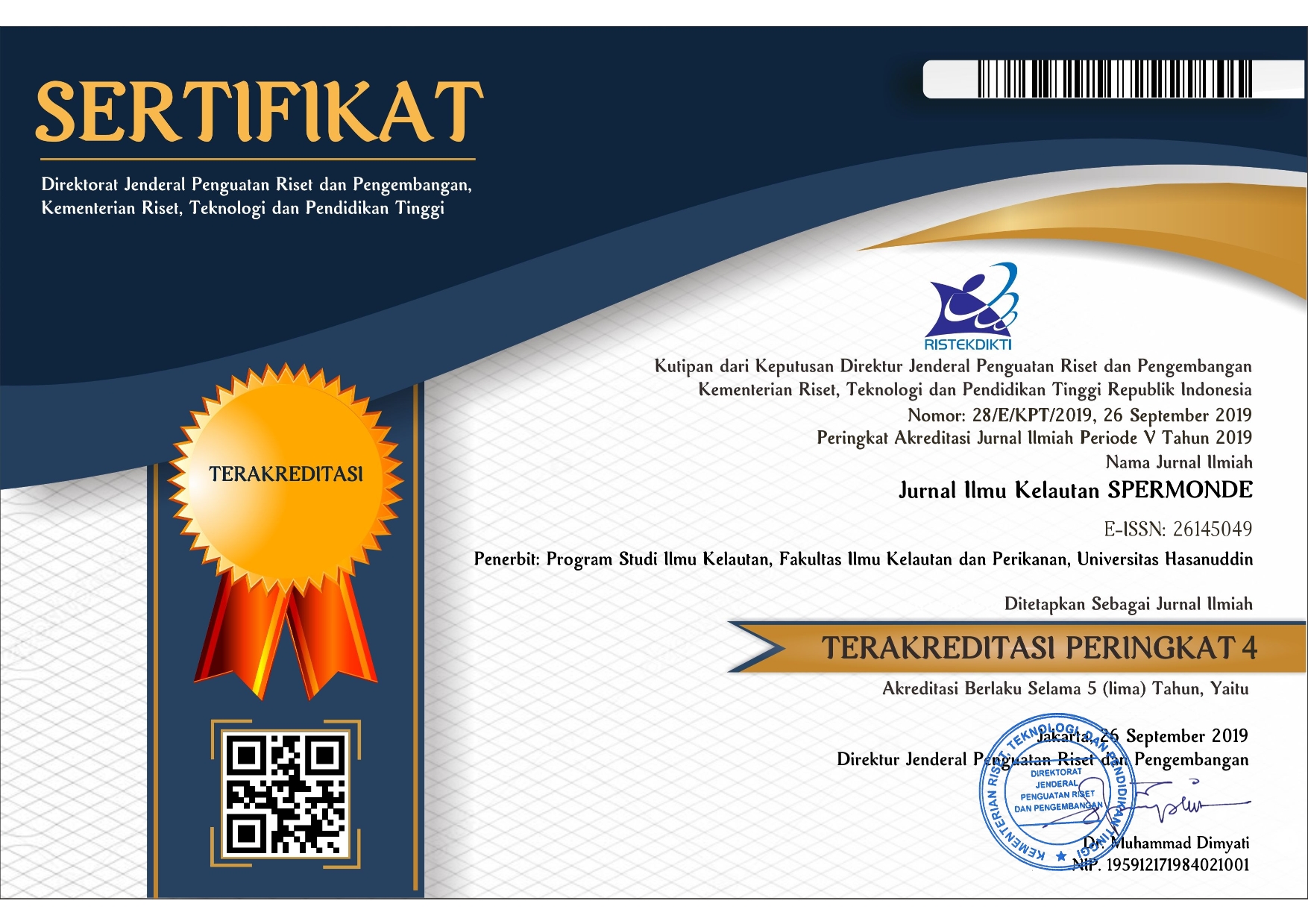OPTIMIZATION OF Β-CAROTENE PRODUCTION IN Dunaliella salina USING LED AND DIFFERENT CULTURE MEDIA
DOI:
https://doi.org/10.20956/jiks.v7i1.14767Keywords:
β-caroten, Dunaliella salina, LED, culture mediaAbstract
Dunaliella salina is a green microalgae that has the ability to produce β-carotene used in various fields, such as food supplements, natural colorant, antioxidants, anti-cancer, and anti-aging. D. salina is capable of producing large amounts of carotenoids under stressful conditions, including light and nutrient. Light is the main factor that stimulate the production of carotenoid pigments and media composition plays an important role for growth, biomass, and β-carotene production. The accumulation of β-carotene in microalgae is closely related to the type and quality of light and the composition of the culture media. This study aimed to determine the production of β-carotene in microalgae D. salina using LEDs and different culture media to select the best culture conditions for producing high value compounds. The results showed that D. salina cultured using red LED light and technical Walne media was able to produce β-carotene with the highest amount of 767,499 mg/100 g. In blue LED light and Walne Pro-analysis media, the β-carotene content was 380,522 mg/100 g, while the ZA+NPK media has the lowest value. In this study, Walne Pro-analysis media became the best culture medium for D. salina. Therefore, natural sources of β-carotene can be obtained from D. salina, so it could reduce the use of synthetic carotene in meeting global demand.Downloads
Download data is not yet available.
Downloads
Published
2021-09-02
Issue
Section
Articles
License

This work is licensed under a Creative Commons Attribution-NonCommercial 4.0 International License.

This work is licensed under a Creative Commons Attribution 4.0 International License










